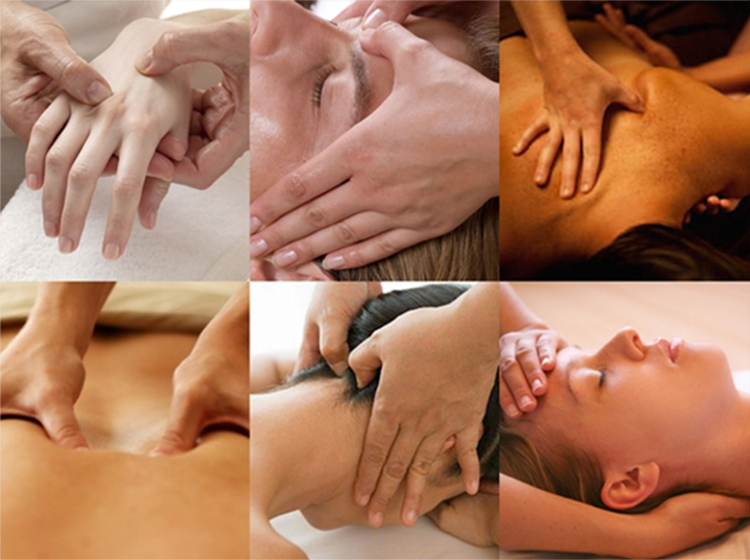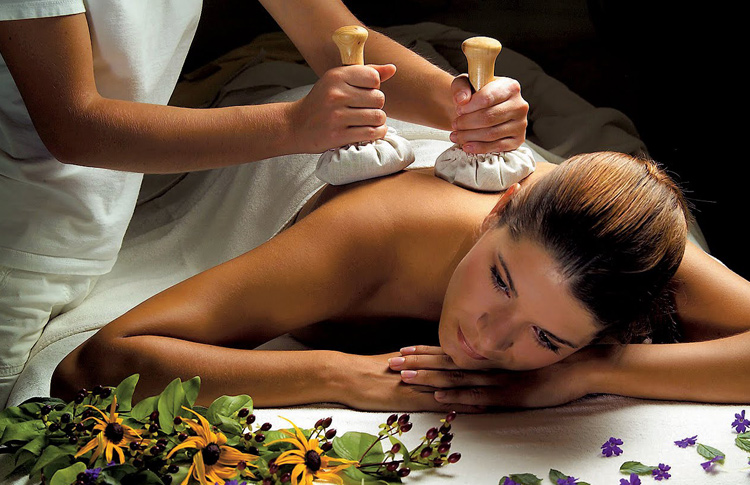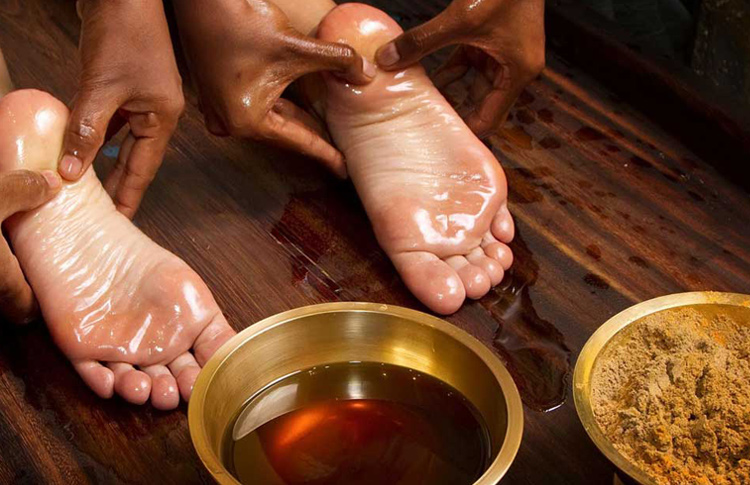
Prior to the Marma Therapy, one has to discover the actual location of the particular marma, as it varies the location of the marma varies from person to person, the measurement of his/her body and body parts. But due to the differences in each individuals, it is very difficult to find out the precise location of the marma point.
The spot where the marma is located is often represented in account of the joints, bony prominences and other body structures. The distance is illustrated in terms of each individual's finger measurements. The scope of each marma type is also considered. The marma points can vary in size; it can be that of a pinhead to half a finger (when measured laterally) to four fingers (which is laid laterally) or it can even be the size of the palm. When a marma point is disturbed, the area on the skin surface, undergoes different changes, in ways like; it becomes either stiff, tender, cool, hot, swollen, uneven, rough or depressed.

Panchakarma is the specialized therapeutic procedure in Ayurveda by which the toxins (ama) and diseases accumulated inside a body is rooted out.
In Sanskrit, “Pancha” literally translates as Five and “Karma” as actions or procedures. Hence, Panchakarma is the sophisticated five-fold treatment procedures administered to treat different ailments and also to evacuate toxins from the body.
As is the case with every treatment procedure, the process of Panchakarma therapy involves preparing the patient before to the main course of the five-fold treatment.
Based on the stages of the process, Panchakarma is classified into Poorva Karma, Pradhana Karma and Paschata Karma.
Panchakarma therapy begins with Poorva Karma (Pre Therapy procedures) or preparing the patient for the main treatment. Different stages of Poorva Karma are.
The main treatment protocol includes the five-fold karmas / Panchakarma. They are as under:
Paschata Karma:
The third and final stage in Panchakarma treatment is the Paschata Karma or Post Therapy procedures. Paschata Karma is just as baratos relojes important as the first two stages as it is here, the ‘Agni’ or the metabolic fire of an affected individual is reignited so that he/she can get back to leading the regular diet and lifestyle.
This, hence includes slowly bringing the dietary changes for the person till he/she attunes himself / herself back. After this a set of instructions are also given to lead a healthy and disease free life

In the name of Ayurvedic Massage, Abhyanga had already gained the worldwide attention and popularity. In Ayurveda, Abhyanga is renowned for the application of oil to the skin, which is followed by massaging in specific directions. The practice of massaging in specific direction enhances blood circulation, helps in elimination of toxins from tissues, soothe mental and physical fatigue, boost the musculoskeletal system functioning, remove heaviness and stiffness of the body and ultimately results in complete relaxation of the whole body and mind. Even before the Vedic period, Abhyanga therapy was practised and is known to be the ancient practice in Ayurveda.
Aggravated Vata can lowered down quickly by Sneha (oil), which is used for Nasya, Anuvasama, Paana and Adhyanga at the right rime. Few of the diseases for which Abhyanga is indicated in Ayurveda are as follows: 1. Vata Vyadhi 2. Shwayathu 3. Kushta Vata Rakta 4. Switra Hidma 5. Rajayakshma 6. Twagasrita Jeernajwar 7. Dahajwar Madatyaya (Vatika) 8. Mutrakricha (Vatika) 9. Vriddhi (Vatika) 10. Gulma (Vatika) 11. Vatika Kasa 12. Kshataj kasa and Shwasa 13. Sheetajwar 14. Rakta Pitta
CHACKALAYIL AYURVEDA, Nedumprayar, Maramon P.O - 689 549
Mob: 9048622669, 9349444319, Ph: 0468-2210449
Email: marmacare@gmail.com
Copyright © Chackalayil Ayurveda 2024 All Rights Reserved
Designed and Developed by websoultechserve.com